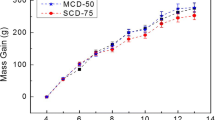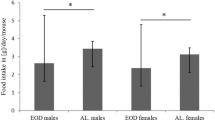Abstract
Blood content of MDA in rats increased 1 and 2 weeks after mandibular bone fracture at stages of cellular fibrous and chondroid callus and decreased 4 weeks after fracture at the stage of primary bone callus. Treatment with Se (intragastrically and electrophoretically) reduced this increase by activating selenium-containing glutathione peroxidase. In order to clear out the relationship between Se and carbohydrate metabolism in different ages, the distribution of Se between the blood and mandibular bone, diaphysis and metaepiphyseal zone of the femoral bone was studied using the bone/blood relative radioactivity coefficient after intraperitoneal injection of [75Se]selenate. In control 1-month-old rats the radioactivity had 2 peaks corresponding to 6 and 48 h. The first peak was presumably caused by Se adsorption on hydroxyapatite, the second by chemosorption on hydroxyapatite and protein binding. Only one peak of relative radioactivity (after 12-48 h) was observed in 3-month-old control rats, and it could be increased by sucrose diet. The relative radioactivity was higher in rats receiving sucrose ration for 2 months starting from the age of 1 month in comparison with the control.
Similar content being viewed by others
REFERENCES
A. P. Avtsyn, A. A. Zhavoronkov, M. A. Rish, and L. S. Strochkova, Human Trace Elements [in Russian], Moscow (1991).
M. V. Kozlova, I. S. Pinelis, Yu. A. Petrovich, et al., Patol. Fiziol. Eksper. Ter., No. 2, 35–37 (1997).
Yu. A. Petrovich and R. P. Podorozhnaya, Uspekhi Sovrem. Biol., 91, No. 1, 127–144 (1981).
Yu. A. Petrovich, R. P. Podorozhnaya, and T. I. Genesina, Patol. Fiziol. Eksper. Ter., No. 3, 22–24 (1996).
Yu. A. Petrovich, R. P. Podorozhnaya, and N. A Gurin, Stomatologiya, No. 6, 73–76 (1985).
N. A. Terekhina and Yu. A. Petrovich, Free-Radical Oxidation and Antioxidant Systems (Theory, Clinical Application, Methods) [in Russian], Perm (1992).
V. A. Tutel'yan, V. A. Knyazhev, S. A. Khotimchenko, et al., Selenium in Human Body. Metabolism, Antioxidant Characteristics, and Role in Carcinogenesis [in Russian], Moscow (2002).
M. M. Abdelrahman and R. L. Kincaid, J. Dairy Sci., 76, No. 11, 3588–3593 (1993).
C. Delibasi, S. Demiralp, and B. Turan, J. Oral Sci., 44, No. 2, 85–90 (2002).
R. Moreno-Reyes, D. Egrise, J. Neve, et al., J. Bone Miner. Res., 16, No. 8, 1556–1563 (2001).
A. Parko, Proc. Finn. Dent. Soc., 88, Nos. 1-2, 57–59 (1992).
S. Sasaki, H. Iwata, N. Ishiguro, et al., Nutrition, 10, No. 6, 538–543 (1994).
T. R. Shearer, J. Nutr., 105, No. 3, 338–347 (1975).
B. Turan, S. Bayari, C. Balcik, et al., Biometals, 13, No. 2, 113–121 (2000).
Author information
Authors and Affiliations
Rights and permissions
About this article
Cite this article
Petrovich, Y.A., Podorozhnaya, R.P., Kichenko, S.M. et al. Effects of Selenium-Containing Compounds and Their Metabolism in Intact Rats and in Animals with Bone Fractures. Bulletin of Experimental Biology and Medicine 137, 74–77 (2004). https://doi.org/10.1023/B:BEBM.0000024392.80944.e6
Issue Date:
DOI: https://doi.org/10.1023/B:BEBM.0000024392.80944.e6




